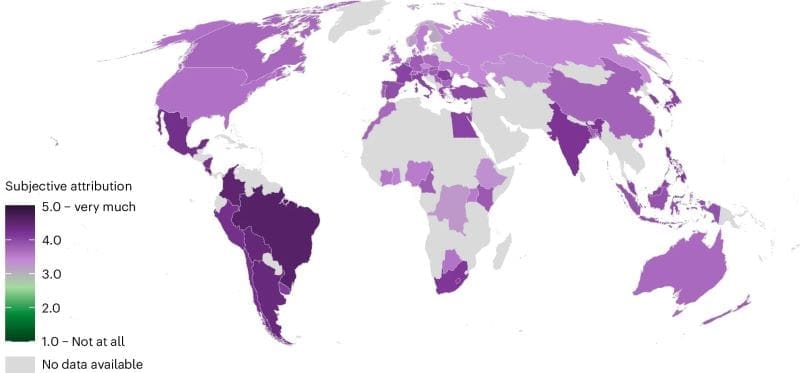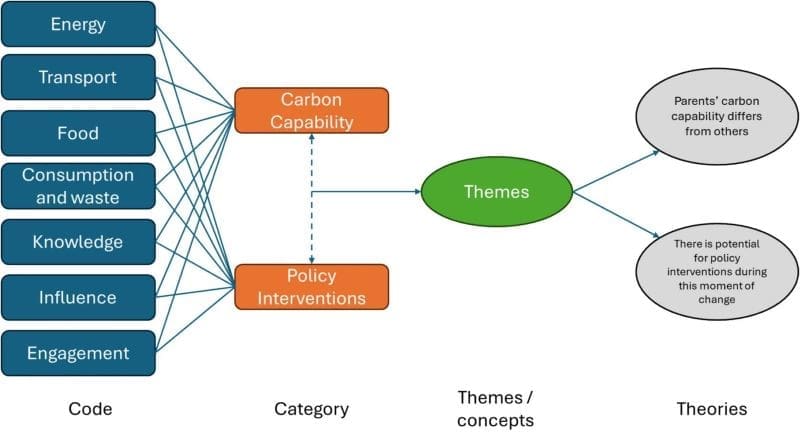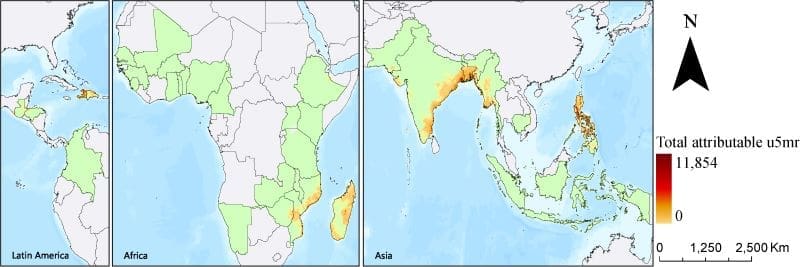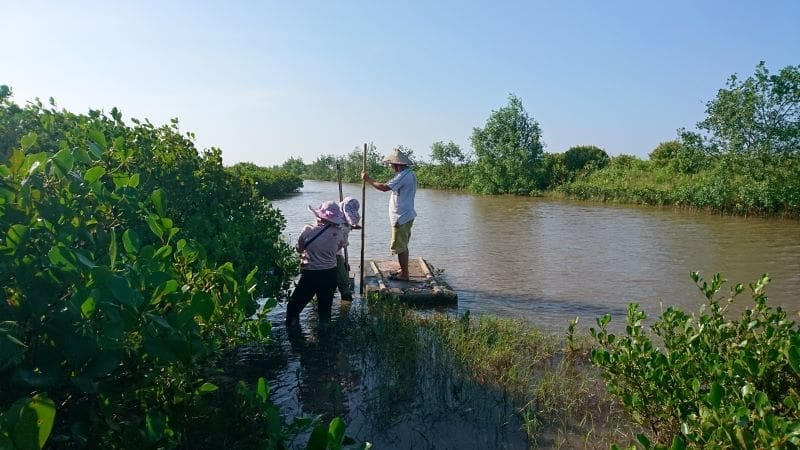Explore the latest insights from top science journals in the Muser Press daily roundup (September 28, 2025), featuring impactful research on climate change challenges.
In brief:
Innovative hydrogel for soilless farming, tackling drought and pollution
It is a fully biodegradable and eco-friendly system for hydroponic agriculture, made of hydrogel and capable of supporting plant growth with minimal water; in the future, it will be able to monitor plant health in real time. This innovation is the result of joint research between the Faculty of Engineering at the Free University of Bozen-Bolzano (UniBz) and the Istituto Italiano di Tecnologia (IIT-Italian Insititute of Technology) in Genoa. The invention offers a zero-waste, low-environmental-impact solution for agriculture, a sector increasingly threatened by climate change, drought, pollution, biodiversity loss, and soil degradation.
The research study has been published in the American Chemical Society journal ACS Agricultural Science & Technology and stems from a multidisciplinary project involving researchers from the Faculty of Engineering of the Free University of Bozen-Bolzano (UniBz) – Camilla Febo, researcher at IIT and UniBz, Professors Paolo Lugli and Luisa Petti of the Sensing Technologies Lab, in collaboration with Professors Tanja Mimmo and Luigimaria Borruso from the Faculty of Agricultural, Environmental and Food Sciences at UniBz, within the framework of the Competence Centre for Plant Health – and from the Smart Materials Unit at the Istituto Italiano di Tecnologia (IIT) – Athanassia Athanassiou, principal investigator and Vice Scientific Director of IIT, and IIT researcher Danila Merino.

Hydrogels are materials whose internal structure is composed of a polymer network, designed to be porous and therefore very advantageous in applications where it is important to retain water or nutrients. In horticulture, they are emerging as sustainable alternatives to petroleum-based foams and pots.
At IIT’s laboratories in Genoa, researchers produced hydrogels from biopolymers, specifically carrageenan, a polysaccharide extracted from red algae and widely used for its gelling, thickening, and stabilizing properties. The resulting hydrogel is biodegradable and can be safely applied to soil without causing pollution. The team enriched the porous material with whole-algae extracts, which serve as biostimulants: substances that stimulate natural plant processes to improve nutrient efficiency, stress tolerance, and crop quality, regardless of nutrient content.
The final material has the ideal properties for use in soilless farming, such as hydroponics, and requires only minimal amounts of water. Plant tests were conducted in the laboratories in Bolzano.
The research team showed that the hydrogel can retain large amounts of water, swelling by up to 7000%, and can also support plant growth from seeds. Tests with the model plant Arabidopsis thaliana demonstrated a more vigorous growth process compared to traditional hydroponic substrates.
The South Tyrolean scientists also plan to integrate flexible, biodegradable sensors into these hydrogel scaffolds, enabling precision farming by monitoring plant health and soil conditions in real time.
“Our goal,” emphasizes Camilla Febo, researcher at UniBz/IIT, “was to develop a material that was not only biodegradable and sustainable, but that could also actively interact with plants, efficiently providing them with water and nutrients. The hydrogel we created can retain moisture and gradually release it, significantly reducing water consumption. This approach represents an important step towards more resilient and environmentally friendly agriculture.”
“At a time in history when freshwater resources are drastically diminishing and plastics are increasingly polluting the environment, at IIT we are focusing on developing smart and sustainable materials to counteract these effects through concrete solutions for key sectors such as agriculture,” states Athanassia Athanassiou, Vice Scientific Director of IIT and Head of the Smart Materials Unit. “In this work, we used exclusively natural marine resources to engineer a hydrogel that retains water and provides nutrients to plants. Materials engineering from natural resources is one of the foundational areas of the research unit I coordinate, with applications ranging from precision agriculture to packaging, water purification, green electronics, and marine biodiversity.”
“Technological innovation must go hand in hand with environmental sustainability,” comments Luisa Petti, professor and head of the Sensing Technologies Lab at UniBz. “In our laboratory, we focus on designing flexible and biodegradable electronic devices that can be integrated into smart agricultural systems. The hydrogel developed in collaboration with IIT in Genoa is a concrete example of how technology can support agriculture by improving resource efficiency and reducing environmental impact. This project demonstrates that it is possible to combine innovation and sustainability to address global challenges related to food security and climate change.”
Journal Reference:
Camilla Febo, Manuela Ciocca, Mauro Maver, Tanja Mimmo, Oussama Bouaicha, Luigimaria Borruso, Paolo Lugli, Luisa Petti, Athanassia Athanassiou, and Danila Merino, ‘Harnessing Algal Biomass: Superabsorbent and Biostimulant Hydrogels for Seed Germination in Soilless Cultivation’, ACS Agricultural Science & Technology 5 (8), 1580-1589 (2025). DOI: 10.1021/acsagscitech.4c00723
Article Source:
Press Release/Material by Istituto Italiano di Tecnologia (IIT)
Is experiencing extreme weather events linked to climate action?
An international team of researchers – including social psychologist Olga Białobrzeska, PhD, from the Faculty of Psychology at SWPS University in Warsaw, and psychologist Michał Parzuchowski, PhD, a professor at the Faculty of Psychology, SWPS University in Sopot – investigated how extreme weather events and their connection to climate change are linked to support for widely discussed climate regulations in 68 countries.
Extreme weather events and their high costs
Climate change is increasing the frequency and intensity of extreme weather events (defined as events that are rare at a particular place and time of year). The cost of extreme weather events attributable to climate change is estimated at US$143 billion per year. The impacts of extreme weather events are disproportionately felt in the Global South, which includes the less rich countries of Africa, Asia, Latin America, and the Middle East. Even though the Global South is at greater risk, attribution studies and social science research on human responses to such events overwhelmingly focus on countries and populations in the Global North.
So far, global efforts to slow climate change and mitigate the impacts of extreme weather events have been insufficient, which calls for more stringent climate policies. Public support for climate policies is important because such support can drive governmental policy outputs, and policymakers often respond to public demand for climate policies.

Previous studies on the relationship between experiencing extreme weather events and climate change action and beliefs have produced inconsistent findings. In particular, some studies have found that experiencing extreme weather events increases climate change belief, concern, support for climate policies, while other studies found no relationship.
Another important factor is whether people attribute extreme weather events to climate change. Recent studies have shown that people who do are more likely to perceive climate change as a risk and to engage in mitigation efforts.
How are extreme events perceived?
In the latest study, researchers combined data on exposed populations computed using the probabilistic CLIMADA risk modelling platform with global survey data on subjective attribution of extreme weather events and support for climate policies collected in the ‘Trust in Science and Science-related Populism (TISP)‘ study. They considered 68 countries.
The researchers analysed whether exposure to extreme weather events was related to climate policy support, and wherther people felt that these events were caused by climate change. They also measured the level of public support for climate policies across countries, to what degree people attributed extreme weather events to climate change across countries, and whether this attribution affected policy support.
The study showed that a significant proportion of respondents supported climate regulations and attributed severe weather events to climate change. The study’s main finding was surprising: support for climate regulations was determined not by exposure to weather events as such, but by personal beliefs about the causes of these events.
The perceived links between weather events and climate change were accompanied by higher support for five widely discussed climate policies:
- increasing taxes on carbon-intensive foods (such as beef and dairy);
- increasing taxes on fossil fuels (oil, coal);
- expanding infrastructure for public transportation; increasing the use of sustainable energy;
- protecting forested and land areas.
The study results suggest significant differences in public support depending on the type of climate action. In line with previous research, increasing carbon taxes received the lowest support (with only 22% of respondents supporting higher taxes on carbon-intensive foods, and 29% supporting higher taxes on fossil fuels). Protecting forested and land areas, by contrast, was a popular policy option, supported by 82% of respondents.
Support for climate change varies significantly between countries. The highest levels of support were recorded in African and Asian countries, average levels in Australia, Costa Rica, and the United Kingdom. Poland was slightly below the global average, while Russia and Czechia closed the list. Younger, more religious, better educated, and more affluent men, living in cities, expressed their support for climate policy more often.
Our research shows that simply experiencing extreme weather events like storms, heatwaves, or hurricanes does not automatically increase support for climate policy. What matters most is whether people attribute these events to climate change. When people see these weather events as caused by global warming, they become more supportive of climate action, regardless of how often such events actually occur in their surroundings. However, it’s also possible that people who already support climate policies are more likely to blame extreme weather on climate change. We need longitudinal studies to better understand the direction of this relationship, notes Michał Parzuchowski.
Journal Reference:
Cologna, V., Meiler, S., Kropf, C.M. et al., ‘Extreme weather event attribution predicts climate policy support across the world’, Nature Climate Change 15, 725–735 (2025). DOI: 10.1038/s41558-025-02372-4
Article Source:
Press Release/Material by SWPS University
Parents want to act on climate change but struggle to model low-carbon lifestyles
Parents are deeply worried about the climate crisis and their children’s future, but a new University of Bath study shows many struggle to live low-carbon lives. Time pressures, lack of affordable options and structural barriers mean concern rarely translates into action. Researchers say parents remain a critical but under-recognised group in climate policy, with huge potential to shape the next generation’s environmental values.
The peer-reviewed study, published in Population & Environment, explores how UK parents of children under 15 understand and act on climate change, assessing their so-called “carbon capability” – the ability to make informed, effective low-carbon choices and influence others.

Based on a survey of 1,001 parents, 30 interviews and two focus groups, the research found that while parents feel a strong responsibility to safeguard their children’s future, most find it difficult to consistently model low-carbon behaviours at home.
Key findings:
Compared to non-parents, parents reported higher energy use, greater reliance on cars, and more plastic waste.
Parents expressed guilt about their impact but said time pressures, convenience and children’s needs often outweighed their intentions.
Many parents hesitated to discuss climate change with their children, fearing they might cause worry or anxiety. Yet most were open to learning and wanted guidance on how to have these conversations.
While parents shape their children’s behaviours, children’s climate education sometimes boosted parental awareness and action.
Lead author Dr Sam Hampton from the Department of Psychology, Centre for Climate Change and Social Transformations (CAST) and the Institute of Sustainability and Climate Change (ISCC) at the University of Bath said: “Parenting is an important moment of change, and parents are an under-recognised group in society with unique experiences and influence.
“With the right mix of support and structural change – like improved public transport, affordable sustainable products and incentives for low-carbon diets – parents could become powerful low-carbon role models for the next generations. While they are not consistently acting as low-carbon role models today, they have huge potential to shape their children’s values and behaviours – making them central to long-term climate action.”
Charlotte Howell, Co-Director of Parents for Future, said: “Parents feel the urgency of the climate crisis deeply, but many of us are held back by barriers beyond their control. Parents were already juggling a lot of plates before the cost of living crisis struck. But with more government support and inclusive policy, we can move from worry to powerful action and build the world our children deserve.”
Journal Reference:
Hampton, S., Taylor, E. & Whitmarsh, L., ‘Parenting and climate change: assessing carbon capability in early parenthood’, Population and Environment 47, 34 (2025). DOI: 10.1007/s11111-025-00506-6
Article Source:
Press Release/Material by University of Bath
Cyclones increase risk of death for children under five
Tropical cyclones pose an important risk of death for children under five in low- and middle-income countries, reports a new study led by Renjie Chen of Fudan University, China, published in the open-access journal PLoS Medicine.
Tropical cyclones, which include typhoons and hurricanes, are among the most frequent and destructive natural disasters. These storms are becoming more common and more severe due to climate change, which has raised concerns about their effects on young children, who are especially susceptible to drowning, injuries from high winds and flying debris, lack of clean drinking water or the breakdown of health care services. Previous studies have often focused on single cyclone events or high-income regions, leaving a gap in our understanding of the effects in countries with limited resources.

To understand the impact of tropical cyclones on the health of children under five in low- and middle-income countries, the researchers used survey data to identify deaths after a storm event. They looked at the survival of the child’s siblings at the same age to see if a death at this age was unusual, and thus more likely linked to the cyclone. The analysis included 100,798 children under five who had died and 247,445 surviving siblings across 34 low- and middle-income countries. Researchers found a significant link between deaths of children under the age of five and exposure to a cyclone in the month before death.
The global analysis demonstrates the substantial risk posed by cyclones to young children. Overall, the researchers estimate that cyclones caused the death of 850,000 children under five from 2000 to 2020. These findings illuminate the need for disaster preparedness in vulnerable regions to reduce the number of child deaths linked to these events.
The authors add: “Across 34 low- and middle-income countries, tropical cyclones were linked to higher under-five mortality, with an estimated 850,000 child deaths from 2000 to 2020. The findings underscore the urgent need for disaster preparedness that ensures safe water, sanitation, and health services for vulnerable communities.”
Journal Reference:
Guo Y, Zhu Y, He C, Gao Y, Zhou L, Bachwenkizi J et al., ‘Cyclone exposure and mortality risk of children under 5 years old: An observational study in 34 low- and middle-income countries’, PLoS Medicine 22 (9): e1004735 (2025). DOI: 10.1371/journal.pmed.1004735
Article Source:
Press Release/Material by PLOS
‘Land use change drives decadal-scale persistence of sediment organic carbon storage of restored mangrove’
The authors write in the study‘s abstract:
The restoration of blue carbon ecosystems is becoming increasingly recognised as a potentially important tool towards sustainable development because of their capacity to store carbon. However, the spatial and temporal variability of organic carbon storage is high, and the drivers regulating that variability remain poorly defined. This makes it difficult to plan habitat restoration with blue carbon objectives. Here, we quantified spatial and temporal variability of carbon storage in mangrove forests in northern Vietnam, comparing between old-growth forests, forests that have spontaneously naturally regenerated, and areas of intentional restoration.

We found that sedimentation rates have increased over the past 25–50 years, but this did not translate to a general increase in carbon accumulation, suggesting a decrease in carbon burial efficiency. An exception was higher carbon burial in the restored mangrove area since the 1960s, followed by a decline since the 1990s. Microalgae were a consistent source (more than 50%) of the buried organic carbon, except in the post-1960 restored mangrove sediments – where the majority of the carbon originated from the mangroves and estuarine particulates. This suggests a shift in ecological structure towards a ‘closed loop’ of carbon recycling. Carbon burial spatial and temporal dynamics were well aligned to coastal land-use change, upstream dam construction and dry-wet climatic variability.
These results suggest that both old-growth and restored mangrove forests are important carbon stores. Importantly, we show that mangrove re-establishment can have positive effects on carbon storage – supporting the application of habitat restoration for blue carbon-based sustainable development. However, this benefit can be transient if environmental conditions (because of natural or human factors) do not facilitate the development of ‘normal’ ecological functioning, emphasising the need for a holistic approach towards multiple conservation objectives.
Journal Reference:
Burdett HL, Mao J, Hien HT, Duong TT, Ho CT, Kaiser MJ et al., ‘Land use change drives decadal-scale persistence of sediment organic carbon storage of restored mangrove’, PLOS Sustainability and Transformation 4 (9): e0000197 (2025). DOI: 10.1371/journal.pstr.0000197
Article Source:
Press Release/Material by PLOS | CC BY
Featured image credit: Gerd Altmann | Pixabay




